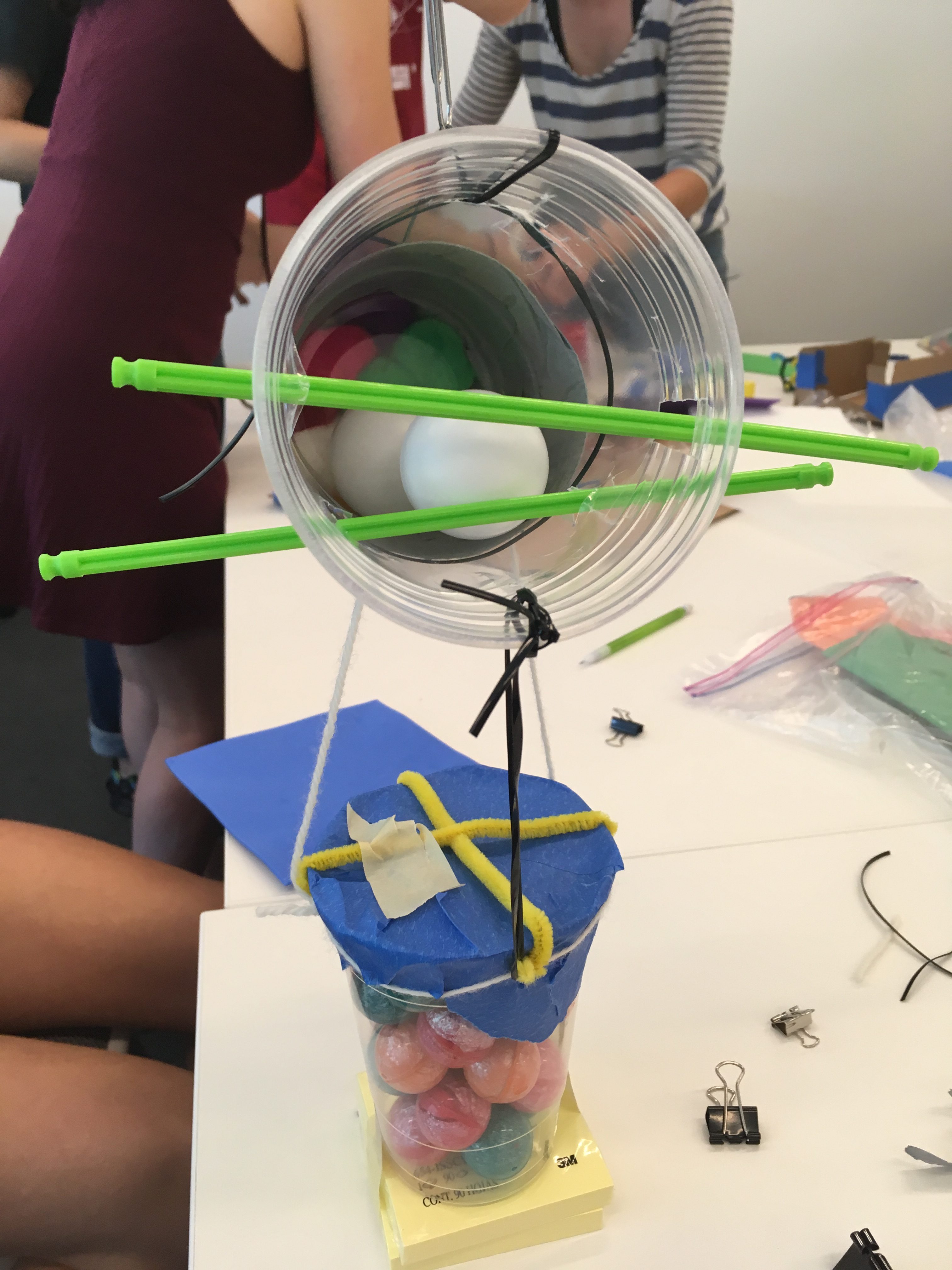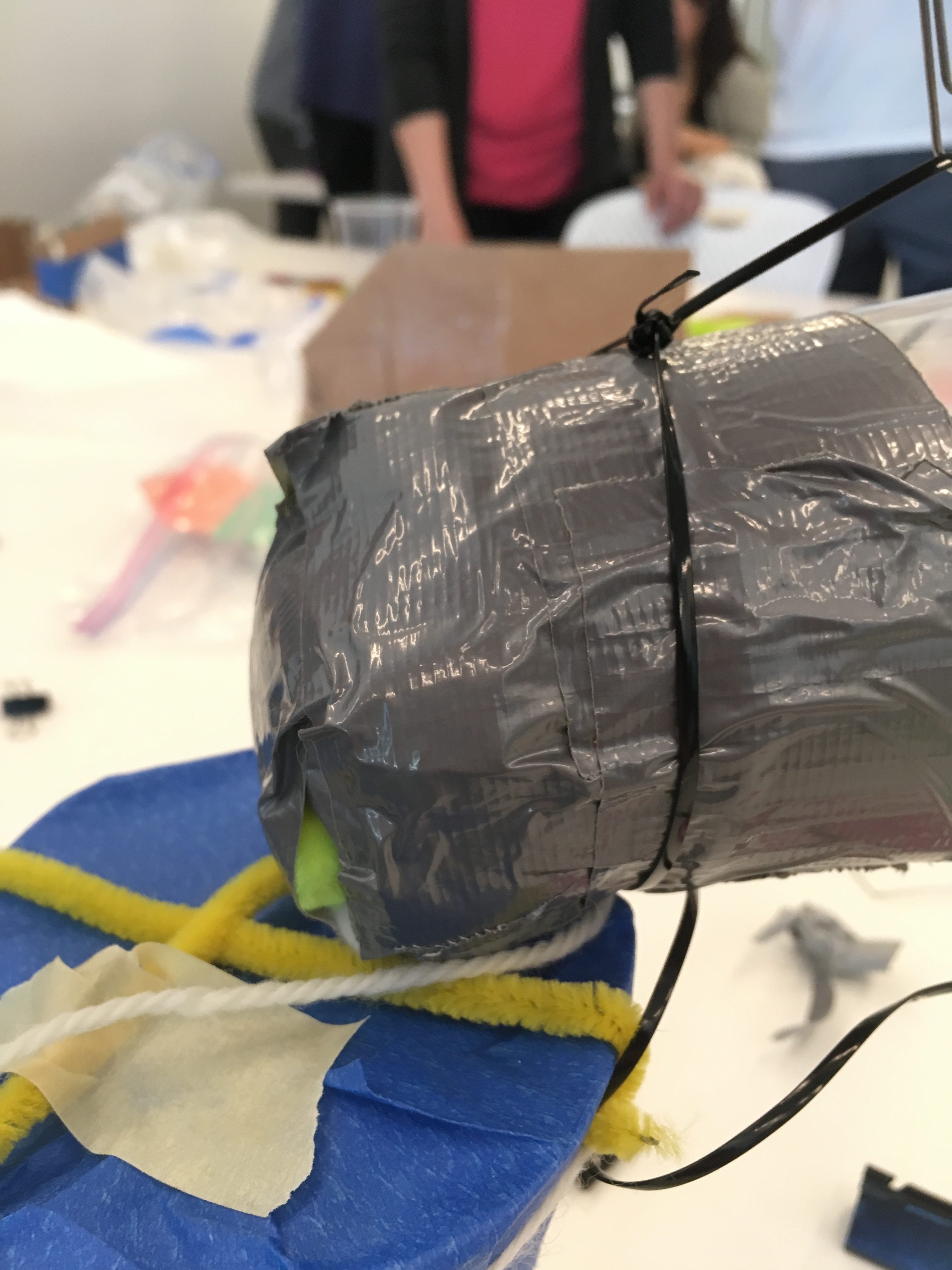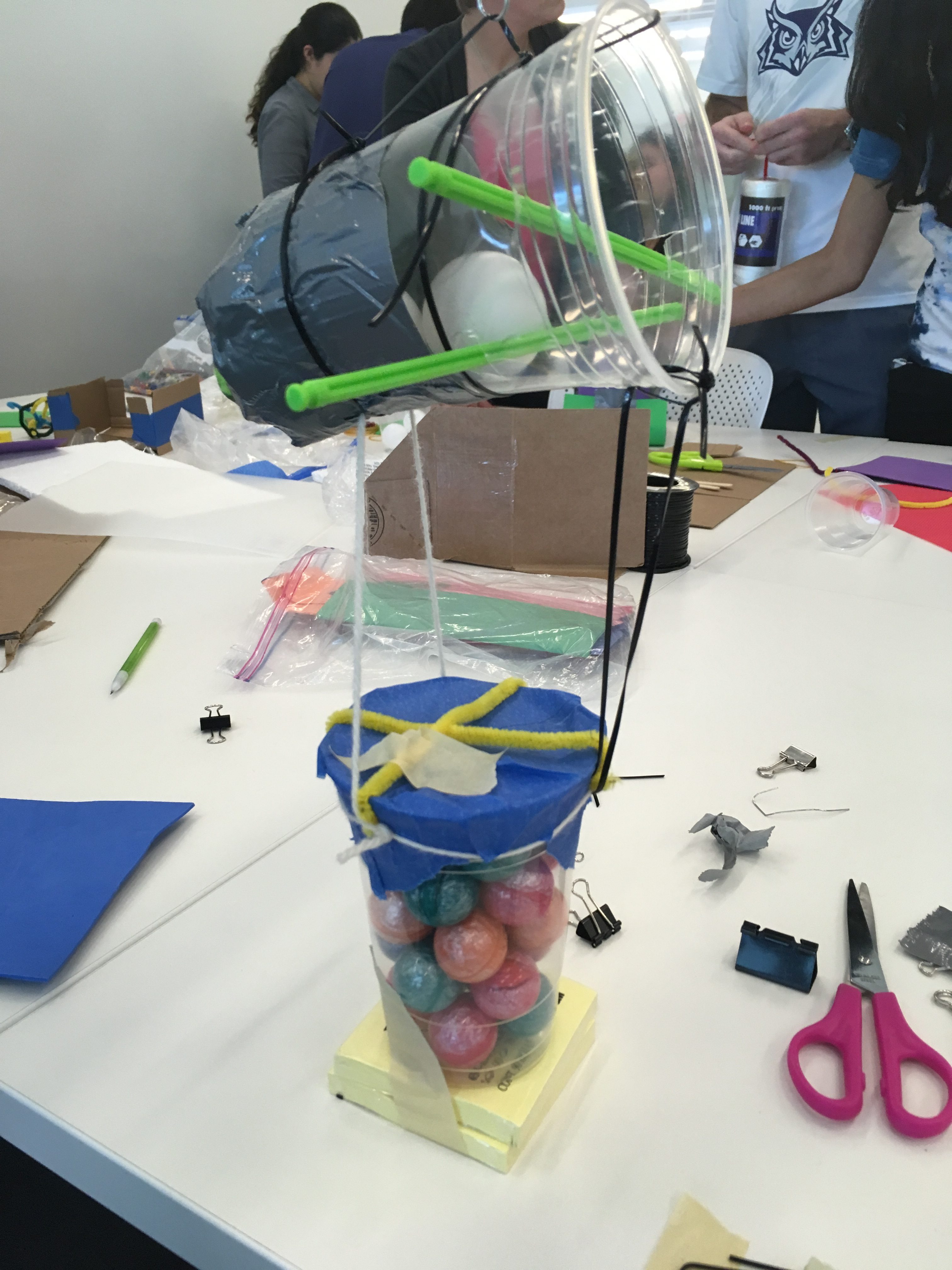This week we were tasked with a rapid prototyping design challenge: to make a safer bijaj. Bijajes are little taxis that are used in India to transport passengers around the city. Unfortunately, they are extremely unsafe. Bystanders are often hit by bijajes and when they hit other things, they often crumple. Here is a picture of a typical bijaj:
For our design challenge, we had some key requirements. The bijaj we created must secure the passenger and the driver (two ping pong balls) in the vehicle, but in traditional bijaj fashion the ping pong balls had to fall out when flipped upside down. We were ultimately graded on how fast our bijaj could travel down a zip line while keeping the passengers inside upon impact.
For our first iteration, we used two solo cups for the main structure. One was padded and used to store the ping pong balls, and the other was attached to the bottom with string as a weight and was filled with bouncy balls. We used a paperclip attached to the zip line for our attachment. It worked pretty well, but we could definitely make some improvements.

Passenger cabin
On our second iteration, we tightened up the cups. We eliminated the strings and attached the top to the bottom with k’nex and super glue. We also further weighted the bottom cup with sand. When testing, it went about a second faster on average than our first iteration. However, on the first iteration, one of the ping pong balls fell out, disqualifying us on that run. Unfortunately, I wasn’t able to take a picture of the second iteration, but a video can be seen of the final run here.



